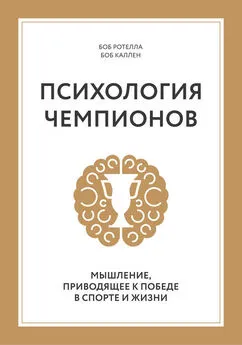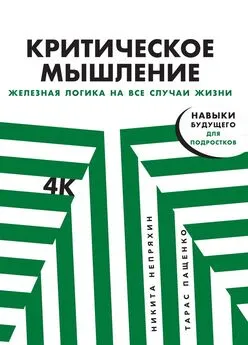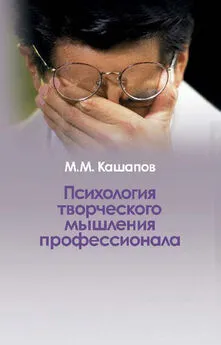Дайана Халперн - Психология критического мышления
- Название:Психология критического мышления
- Автор:
- Жанр:
- Издательство:Издательство Питер
- Год:2000
- Город:Санкт-Петербург
- ISBN:ISBN 5-314-00122-5
- Рейтинг:
- Избранное:Добавить в избранное
-
Отзывы:
-
Ваша оценка:
Дайана Халперн - Психология критического мышления краткое содержание
Эта книга написана в помощь тем, кто хочет научиться думать современно. Опираясь на новейшие достижения когнитивной психологии и свой уникальный педагогический опыт, Дайана Халперн разработала эффективную программу обучения навыкам «критического мышления». Данная книга может быть широко использована в преподавательской и методической работе, окажет неоценимую помощь в самообразовании, а кроме того, является своеобразным путеводителем по современной когнитивной психологии. Рекомендуется психологам, педагогам, философам, а также всем интересующимся когнитивной психологией, психологией творчества, теорией принятия решений.
Психология критического мышления - читать онлайн бесплатно полную версию (весь текст целиком)
Интервал:
Закладка:
Garfield J., Ahlgren, A. (1988). Difficulties in learning basic concepts in probability and statistics: Implications for research. Journal [or Research in Mathematics Education, 19(1), 44–63.
Garnham A., Oakhill J. (1994). Thinking and reasoning. Oxford, England: Blackwe.
Geiselman R. E., Fisher R. P. (1985, December). Interviewing victims and witnesses of crime. Research in Brief, National Institute of justice, 1–4.
Gentner D., Gentner D. R. (1983). Flowing water or teeming crowds: Mental models of electricity. In D. Centner A. L. Stevens (Eds.), Mental models. Hillsdale, NJ: Lawrence Erlbaum Associates.
Gerbner G., Grass L., Morgan M., Signorielli N. (1980). Violence profile No. 11: Trends in network television drama and viewer conceptions of social reality. Philadelphia: Annennberg School of Communication.
Gick M. I., Holyoak K. (1980). Analogical problem solving. Cognitive Psychology, 12, 306–355.
Gifford-Jones W. (1977). What every woman should know about hysterectomy. New York: Funk Wagnalls.
Gilbreth F.B.(\ 963). Cheaper by the dozen. New York: Crowell.
Gilhooly K. J. (1987). Mental modeling: A framework for the study of thinking. In D. N. Perkins, J. Loch-head. J. Bishop (Eds.), Thinking: The second international conference (pp. 19–32). Hillsdale, NJ: Lawrence Erlbaum Associates.
Gillette R. (1987, December 4). Exotic ways to learn doubted by U.S. study. The Wall Street Journal. pp. 1, 32.
Gilovich T. (1991). How we know what isn't so: The fallibility of human reason in everyday life. New York: Macmillan.
Glaser R. (1984). Education and thinking: The role of knowledge. American Psychologist, 39,93-104.
Glaser R. (1992). Expert knowledge and processes of thinking. In D. F. Halpern (Ed.), Enhancing thinking skills in the sciences and mathematics (pp. 63–76). Hillsdale, NJ: Lawrence Erlbaum Associates.
Glucksberg S., Weisberg R. W. (1966). Verbal behavior and problem solving: Some effects of labeling in a functional fixedness problem. Journal of Experimental Psychology, 71, 659–664.
Goleman D., Kaufman P., Ray M. (1993). The creative spirit. New York: Penguin.
Gordon W. J. J. (1961). Synectics. New York: Harper Row.
Gordon W. J. J. (1976). Metaphor and invention. In A. Rothenberg С R. Hausman (Eds.), The creativity Question. Durham, NC: Duke University Press.
Govier T. (1985). A practical study of argument. Bel-mont, CA: Wadsworth.
Gray W. (1991). Thinking critically about new age ideas. Belmont. CA: Wadsworth.
Greeno J. G. (1973). The structure of memory and the process of solving problems. In R. L. Solso (Ed.), Contemporary issues in cognitive psychology. Washington DC: Winston.
Greeno J. G. (1992). Mathematical and scientific thinking in classrooms and other situations. In D. F, Halp-ern (Ed.), Enhancing thinking skills in the sciences and mathematics (pp. 39–62). Hillsdale, NJ: Lawrence Erlbaum Associates.
Griffiths D.HAl 976). Physics teaching: Does it hinder intellectual development? American Journal of Physics, 44, 81–85.
Gruneberg M., Morris P. (Eds.), (1992). Aspects of memory; The practical aspects. (Vol. 1) 2nd. ed. New York: Routledge.
Cuilford J. P. (1977). Way beyond the IQ. Buffalo, NY: Creative Education Foundation.
Gunther M. (1977). The luck factor. New York: Mac-millan. Hadamard, J. (1954). The psychology of invention in the mathematical field. Princeton, NJ: Princeton University Press.
Hains A. A., Hains A. H. (1987). The effects of a cognitive strategy intervention on the problem solving abilities of delinquent youths. Journal of Adolescence, 10,399–413.
Halpern D. F. (1985). The influence of sex role stereotypes on prose recall. Sex Roles, 12, 363–375.
Halpern D. F. (1987a). Analogies as a critical thinking skill. In D. Berger, K. Peydek, W. Banks (Eds.), Applications of cognitive psychology: Computing and education (pp. 75–86). Hillsdale, NJ: Lawrence Erlbaum Associates.
Halpern D. F. (1987b). Thinking across the disciplines: Methods and strategies to promote higher.order thinking in every classroom. In M. Heiman J. Slomianko (Eds.), Thinking skills instruction: Concepts and techniques (pp. 69–76). Washington, DC; National Education Association.
Halpern D. F. (1992). Sex differences in cognitive abilities (2nd ed.). Hillsdale, NJ: Lawrence Erlbaum Associates.
Halpern D. F. (Ed.). (1994). Changing college classrooms: New teaching and learnng strategies for an increasingly complex world. San Francisco: Jossey-Bass.
Halpern D. F. (in press). The skewed logic of The Bell Curve. Skeptic.
Halpern D. F., Blackman S. (1985). Magazines vs. physicians. The influence of information source on intentions to use oral contraceptives. Women and Health, 10, 9-23.
Halpern D. F., Blackman S., Salzman B. (1989). Using statistical risk information to assess oral contraceptive safety. Applied Cognitive Psychology, 3,251–260.
Halpern D. E, Hansen C, Riefer D. (1990). Analogies as an aid to comprehension and memory. Journal of Educational Psychology, 82, 298–305.
Halpern D. F., Irwin F. W. (1973). Selection of hypotheses as affected by their preference values. Journal of Experimental Psychology, 101, 105–108.
Halpern D. E., Nummedal S. G. (Eds.). (1995). Psychologists teach critical thinking [Special Issue]. Teaching of Psychology, 22. Hanson N. R. (1958). Patterns of discovery. Cambridge, England: Cambridge University Press.
Harman G. (1986). Change in view: Principles of reasoning. Cambridge, MA: MIT Press. Harris R. J. (1977). Comprehension and pragmatic implications in advertising. Journal of Applied Psychology, 62, 603–608.
Harris S. B. (1993). The resurrection myth in religion, science, and science fiction. Skeptic, 2, 50–59.
Hasher L., Zacks R. T. (1984). Automatic processing of fundamental information. American Psychologist, 39,1372–1388.
Hayes J. R. (1978). Cognitive psychology. Homewood, IL: Dorsey.
Hayes J. R. (1982). Issues in protocol analysis. In G. R. Ungson D. N. Braunstein (Eds.), Decision making: An interdisciplinary approach. Boston: Kent. Hayes J. R. (1989). Cognitive processes in creativity. In J A. Glover, R. R. Ronning, С R. Reynolds (Eds.), Handbook of creativity (pp. 135–145). New York: Plenum.
Heiman M., Slomianko J. (1986). Critical thinking skills. Washington, DC: National Education Association.
Heller /?., Sattzstein H. D., Caspe W. (1992). Heuristics in medical and non-medical decision-making. The Quarterly Journal of Experimental Psychology, pp. 211–235. HenleM. (1962). On the relation between logic and thinking. Psychological Review, 69, 366–378.
Hennessey B. A., Amabile Т. М. (1987). Creativity and learning. Washington, DC: National Education Association.
Hennessey B. A., Amabile T.M.(\ 988). The conditions of creativity. In R. J. Sternberg (Ed.), The nature of creativity: Contemporary psychological perspectives (pp. 11–38). Cambridge, MA: Cambridge University Press. Herrmann D. J. (1991). Super memory. Emmaus, PA: Rodale.
Herrmann D. J., Weingartner H., Searleman A., McE-voy C. L. (Eds.). (1992). Memory improvement: Implications/or memory theory. New York: Spring-er-Verlag.
Herrnstein R. J., Murray C. (1994). The bell curve: Intelligence and class structure in American life. New York; The Free Press.
Herrnstein R. J., Nickerson R. S., Sanchez M., Swets J. A. (1986). Teaching thinking skills. American Psychologist, 41, 1279–1289.
Hill P., Bedau H., Checile R., Crochetiere W., Keller-man В., Dunjian D., Pauker S., Rubin J. (1979). Making decisions: A multidisciplinary introduction. Reading, MA: Addison-Wesley.
Hitchcock D. (1983). Critical thinking: A guide to evaluating information. Toronto: Methuen.
Hogarth R. M. (1988). Judgment and choice: The psychology of decision (2nd ed.). Chichester, England: Wiley.
Holland J. H., Holy oak K. J., Nisbett R. ?., Thagard P. R. (1986). Induction: Processes of inference, learning, and discovery. Cambridge, MA: MIT Press.
Holley C. D., Dansereau D. F. (1984). Networking: The technique and the empirical evidence. In C. D. Holley D. F. Dansereau (Eds.), Spatial learning strategies: Techniques, applications, and related issues (pp. 81-108). New York: Academic Press.
Holley C. D., Dansereau D. F., McDonald B. A., Garland J. D., Collins K. W. (1979). Evaluation of a hierarchical mapping technique as an aid to prose processing. Contemporary Educational Psychology, 4, 227–237.
Holt J. (1964). How children fail. New York: Dell.
Holt J. (1989). Learning all the time. Reading, MA: Addison-Wesley.
Hostetler A. J. (1988, January). Army eyes novel learning methods. The American Psychological Association Monitor, 19, 7.
Huff D. (1954). How to lie with statistics. New York: Norton.
Hunt E. (1989). Cognitive science: Definition, status, and questions. In M. R. Rosenzweig L. W. Porter (Eds.), Annual review of psychology, 40,603–630.
Hunt M. (1982). The universe within. A new science explores the human mind. New York: Simon: Schustec.
Hutchings P. (1986). Some late night thoughts on teaching creativity. American Association for Higher Educawn, 39, 9-14.
Izawa С (1993). Efficient learning: The total time, exposure duration, frequency, and programming of the study phase. In С Izawa (Ed.), Cognitive psychology applied (pp. 43–78). Hillsdale, NJ: Lawrence Erlbaum Associates.
Izawa C, Hayden R. G. (1993). Race against time: Toward the principle of optimization in learning and retention. In C. Izawa (Ed.), Cognitive psychology applied (pp. 15–42). Hillsdale, NJ: Lawrence Erlbaum Associates.
Jacoby L. L., Kelley С. М., Dywan, J. (1989). Memory attributions. In H. L. Roedinger F. I M. Craik (Eds.), Varietes of memory and consciousness: Essays in honor of Endel Tulving (pp. 391–422). Hillsdale, NJ: Lawrence Erlbaum Associates.
James W. (1890). The principles of psychology New York: Holt.
Janis I. L. (1989). Crucial decisions: Leadership in policy making and crisis management. New York: The Free Press.
Janis I. L., Mann L. (1977). Decision making: A psychological analysis of conflict, choice and commitment. New York: The Free Press.
Jason G. (1987). Are fallacies common? A look at two debates. Informal Logic, 8, 81–92.
Jensen A. R. (1980). Bias in mental testing. New York: The Free Press.
Jensen A. R. (1981). Straight talk about mental tests. New York: The Free Press.
Johnson M. K., Raye C. L. (1981). Reality monitoring. Psychological Review, 88,67–85.
Johnson-Laird P. N… Byrric R. M. J. (1991). Deduction. Hillsdale, NJ: Lawrence Erlbaum Associates.
Johnson-Laird P. N… Legrenzi P., Legrenzi M. (1972). Reasoning and a sense of reality. British Journal of Psychology. 63, 395–400.
Johnson-Laird P. N., Wason P. C. (1970). A theoretical analysis of insight into a reasoning task. Cognitive Psychology, 1, 134–148.
Читать дальшеИнтервал:
Закладка:



![Дэниел Левитин - Путеводитель по лжи [Критическое мышление в эпоху постправды]](/books/1101191/deniel-levitin-putevoditel-po-lzhi-kriticheskoe-my.webp)






